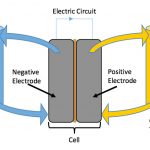Flow Batteries

Flow batteries are electrochemical devices that store energy in the different oxidation states of select elements, including iron (Fe2+, Fe3+), chromium (Cr2+, Cr3+), vanadium (V2+, V3+, VO2+, and VO2+), bromine and hydrogen. Often, these elements are soluble and exist as ions dissolved in an acidic solvent. The principle of operation for flow batteries is identical to that of conventional batteries, where oxidation and reduction reactions at two electrodes enables electron flow. The difference with a flow battery is the manner in which the reactants are stored. Learn More: Flow Batteries
Smart Energy Solutions
Rapid deployment of photovoltaic (PV) systems means even more rapid growth of PV penetration on the grid. This brings many techno-economic problems to planning and operation of the grid, and as a result, utilities are limiting solar deployments due to its intermittency and impact on feeder voltages. Future problems of higher penetration will require all distributed generation to have utility-controllable capabilities for peak-shifting, regulation and contingency reserve.
Learn More: Smart Energy Solutions
Electric Vehicles to Lower Building Utility Demand Costs
Electricity rates for commercial buildings are typically lower than electricity rates for residential buildings, however, commercial buildings also incur a demand charge. Electric Vehicles have the potential to offset a building’s energy demand.
